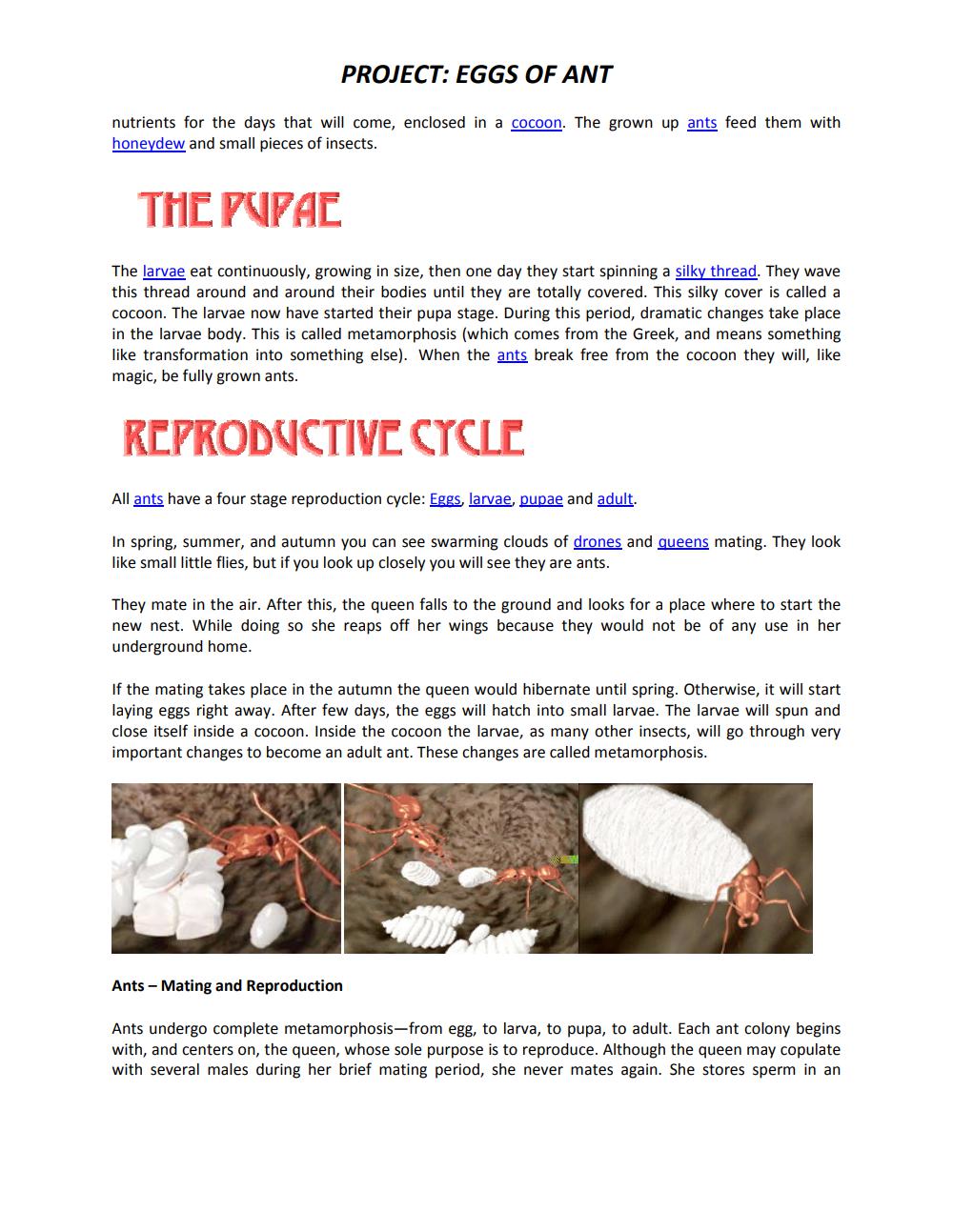Book Title: Eggs of Ant Author(s): Sahil Shah Publisher: Sahil Shah View full book textPage 3
________________ PROJECT: EGGS OF ANT nutrients for the days that will come, enclosed in a cocoon. The grown up ants feed them with honeydew and small pieces of insects. THE PUPAE The larvae eat continuously, growing in size, then one day they start spinning a silky thread. They wave this thread around and around their bodies until they are totally covered. This silky cover is called a cocoon. The larvae now have started their pupa stage. During this period, dramatic changes take place in the larvae body. This is called metamorphosis (which comes from the Greek, and means something like transformation into something else). When the ants break free from the cocoon they will, like magic, be fully grown ants. REPRODUCTIVE CYCLE All ants have a four stage reproduction cycle: Eggs, larvae, pupae and adult. In spring, summer, and autumn you can see swarming clouds of drones and queens mating. They look like small little flies, but if you look up closely you will see they are ants. They mate in the air. After this, the queen falls to the ground and looks for a place where to start the new nest. While doing so she reaps off her wings because they would not be of any use in her underground home. If the mating takes place in the autumn the queen would hibernate until spring. Otherwise, it will start laying eggs right away. After few days, the eggs will hatch into small larvae. The larvae will spun and close itself inside a cocoon. Inside the cocoon the larvae, as many other insects, will go through very important changes to become an adult ant. These changes are called metamorphosis. Ants - Mating and Reproduction Ants undergo complete metamorphosis-from egg, to larva, to pupa, to adult. Each ant colony begins with, and centers on, the queen, whose sole purpose is to reproduce. Although the queen may copulate with several males during her brief mating period, she never mates again. She stores sperm in anPage Navigation
1 2 3 4 5 6
